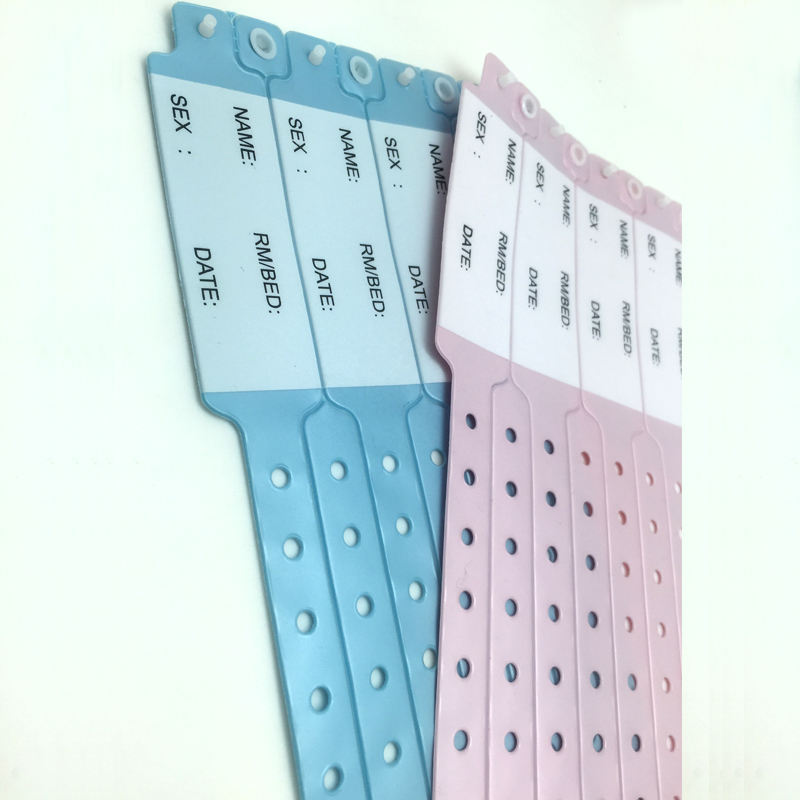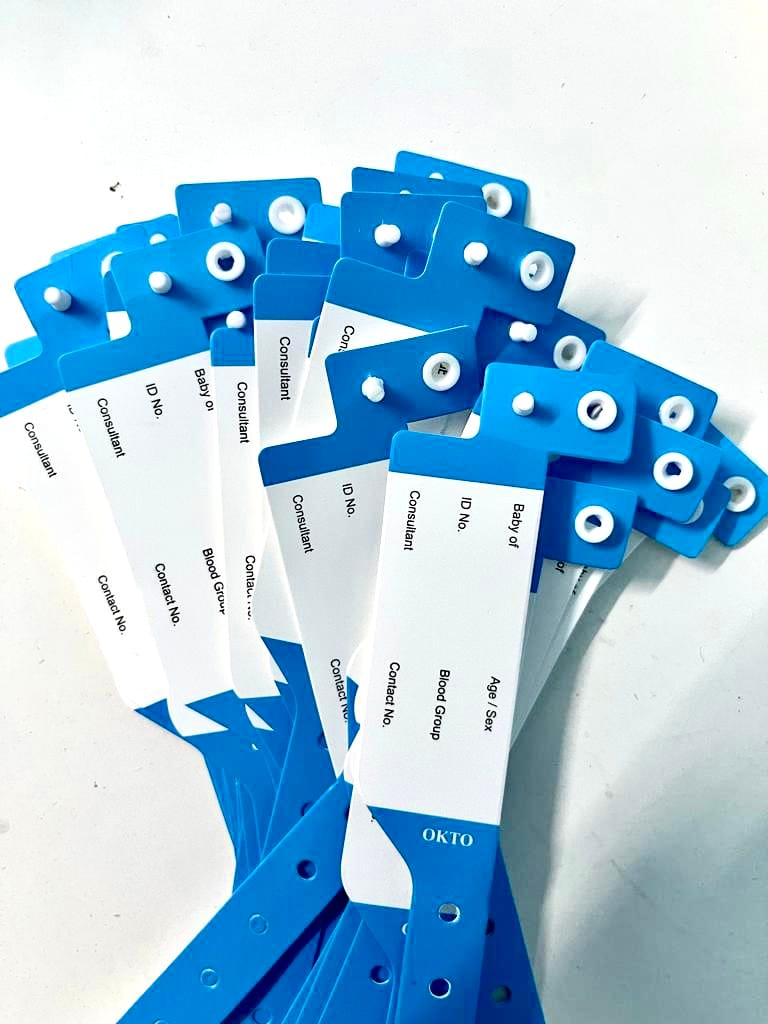Patient Identification Band: Making Certain Compliance and Safety And Security in Healthcare
Patient Identification Band: Making Certain Compliance and Safety And Security in Healthcare
Blog Article
Individual Recognition Bands: A Key Tool for Improved Medical Precision
Client recognition bands represent a crucial part in the quest of medical accuracy and person security within health care environments. The real extent of their influence on person results and overall health care quality warrants additionally evaluation.

Significance of Client Identification
Patient recognition is a crucial element of healthcare that guarantees the security and accuracy of medical treatment. Proper identification methods are vital to protect against clinical errors, which can result in damaging person results, including inaccurate medicine administration, misdiagnosis, or inappropriate therapy strategies. The importance of accurate patient recognition can not be overemphasized, as it works as the structure for efficient interaction amongst health care suppliers.
In atmospheres where numerous individuals are getting treatment all at once, the danger of identity confusion boosts. Carrying out durable identification systems aids reduce these threats and improves client safety. Patient Identification Band. Moreover, accurate recognition contributes to the stability of clinical records, making certain that client backgrounds, allergic reactions, and previous treatments are properly connected to the best person.
Moreover, compliance with governing criteria and accreditation demands typically mandates rigorous patient identification methods, cultivating a culture of accountability and high quality treatment. Eventually, the importance of client recognition goes beyond plain administrative tasks; it is a basic facet of delivering premium healthcare that focuses on person safety and security and improves medical results. Buying effective identification methods is not just helpful-- it's important in today's complex medical care landscape.
Kinds Of Individual Recognition Bands
In medical care setups, various kinds of patient recognition bands are used to guarantee precise identification and enhance safety. These bands act as a critical device in avoiding medical errors associated with patient misidentification.
One of the most typical kind is the conventional wristband, commonly constructed from sturdy plastic and printed with the patient's name, day of birth, and an unique recognition number. These wristbands are commonly color-coded to communicate particular details, such as allergic reactions or other medical conditions.
Another kind is the barcode wristband, which integrates a scannable barcode connected to the patient's electronic health and wellness record. This innovation allows for effective information retrieval and confirmation throughout medication management and other professional procedures.
In Addition, RFID (Radio Frequency Recognition) bands are ending up being significantly popular. These bands can communicate wirelessly with health center systems, permitting real-time monitoring and identification of people, consequently enhancing and simplifying process client safety and security.

Benefits for Healthcare Service Providers
Utilizing person recognition bands uses substantial benefits for doctor, improving both operational performance and individual safety and security. These bands serve as an important tool in streamlining person administration processes (Patient Identification Band). By ensuring exact identification, doctor can minimize the danger of administrative mistakes, such as mislabeling samples or misdirecting therapies, which can cause costly delays and difficulties
Additionally, patient recognition bands help with smooth communication among the medical care team. With conveniently available and standard client details, companies can make enlightened decisions promptly, boosting general workflow. This performance is especially vital in high-pressure atmospheres such as emergency situation departments, where time-sensitive treatments are essential.
The application of recognition bands also supports conformity with governing standards and best methods, therefore reducing the threat of lawful repercussions originating from identification errors. The use of these bands improves information precision in digital health records, leading to much better treatment control and connection.
Influence on Patient Safety
Exact patient identification is a foundation of health care security, significantly lowering the possibility of errors that can jeopardize individual wellness. Using client identification bands is crucial in guaranteeing that each client receives the correct treatment, drugs, and treatments. These bands act as a dependable reference point for medical care specialists, reducing the danger of misidentification, which can result in major consequences such as wrong medicine management or medical mistakes.
The application of standardized patient recognition bands adds to a culture of safety and security within healthcare settings. By giving clear, conveniently readable details, these bands help to enhance the relevance of confirming individual identity at every stage of treatment. In addition, they assist in communication amongst personnel, guaranteeing that everyone entailed in an individual's care knows their certain demands and demands.
Furthermore, making use of client recognition bands can enhance the precision of electronic wellness records, additionally reducing the possibility for errors - Patient Identification Band. By focusing on client safety and security through efficient recognition methods, doctor can cultivate trust and confidence amongst patients, eventually causing better medical outcomes and enhanced person fulfillment. The influence of appropriate person recognition can not be overstated; it is an essential aspect of high-quality medical care delivery
Best Practices for Application
Efficient implementation of patient recognition bands is crucial for improving patient safety and security and lessening errors in health care settings. Personnel training is vital; all team participants must comprehend the significance of accurate individual identification and the treatments for band application.
Second, the layout of the identification bands should focus on visibility and durability. Bands have to be easy to review, contain necessary patient details, and endure day-to-day wear. Using color-coding can better improve fast recognition.


Third, integrating digital health and wellness documents (EHR) with recognition band systems can streamline operations. Automated informs for discrepancies in client identification can stop potential mistakes before they take place.
Finally, conducting routine audits and feedback sessions will certainly help recognize areas for renovation. Engaging team in these discussions cultivates a culture of navigate here safety and security and responsibility.
Verdict
In verdict, individual identification bands play a vital role in enhancing medical accuracy and making sure individual safety and security within medical care systems. Taking on best practices for implementation fosters a society of safety and security, inevitably leading to boosted person end results and better trust fund in medical care solutions.
Person recognition bands stand for an essential part in the quest of clinical accuracy and client safety within healthcare environments.Making use of person recognition bands uses considerable advantages for healthcare service providers, enhancing both functional performance and person safety and security. By prioritizing patient safety with effective recognition methods, healthcare service providers can promote depend on and confidence amongst individuals, ultimately leading to far better professional end results and boosted individual fulfillment.Effective execution of individual visit here identification bands read this post here is critical for improving individual security and minimizing errors in healthcare setups.In conclusion, individual recognition bands play a crucial function in enhancing clinical precision and making sure patient security within health care systems.
Report this page